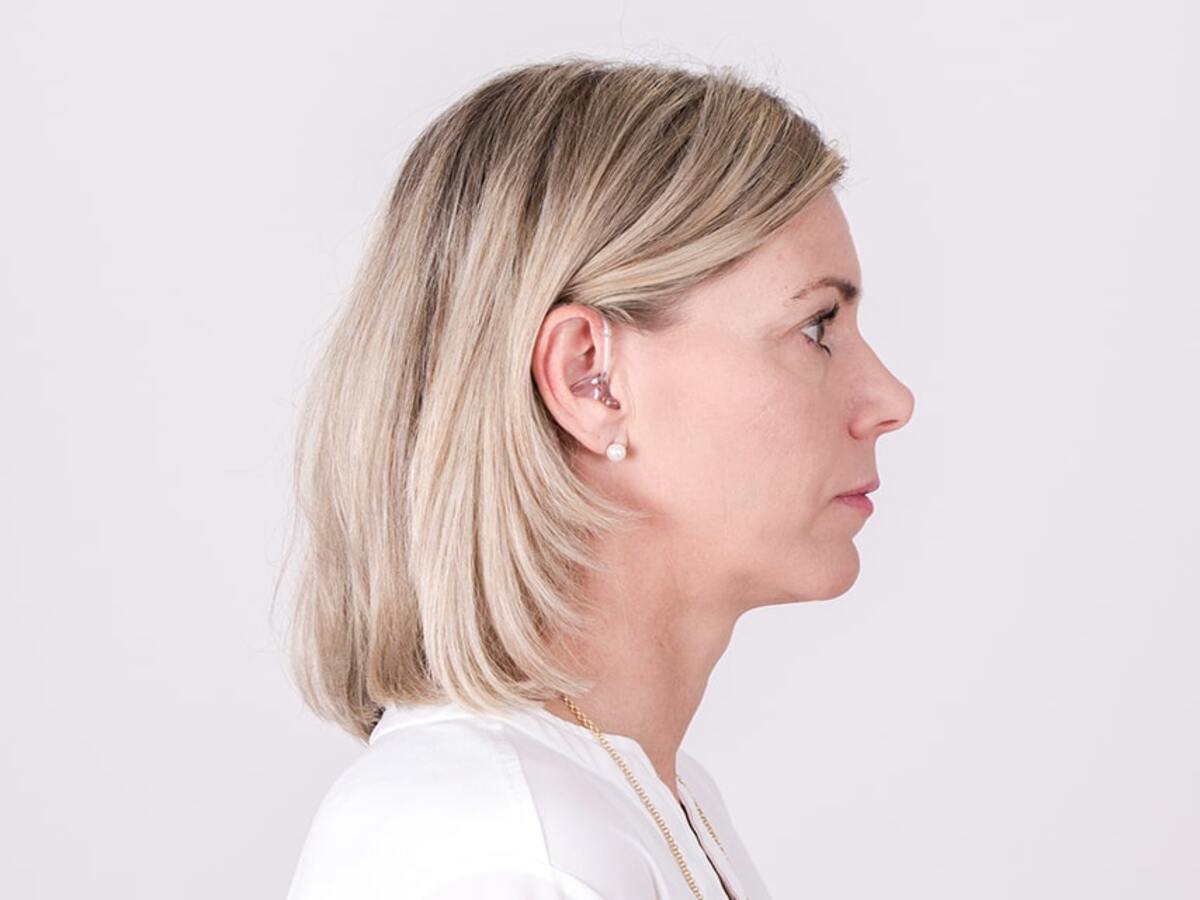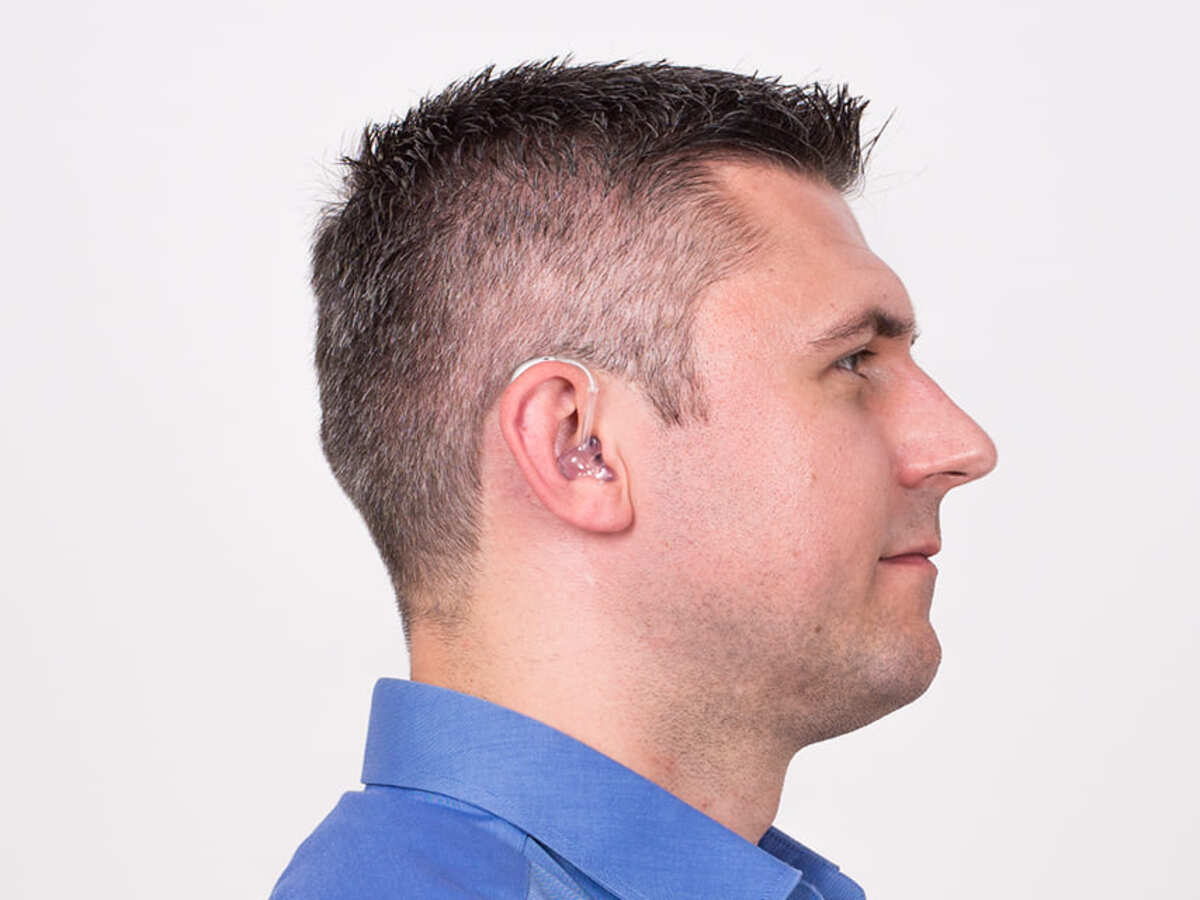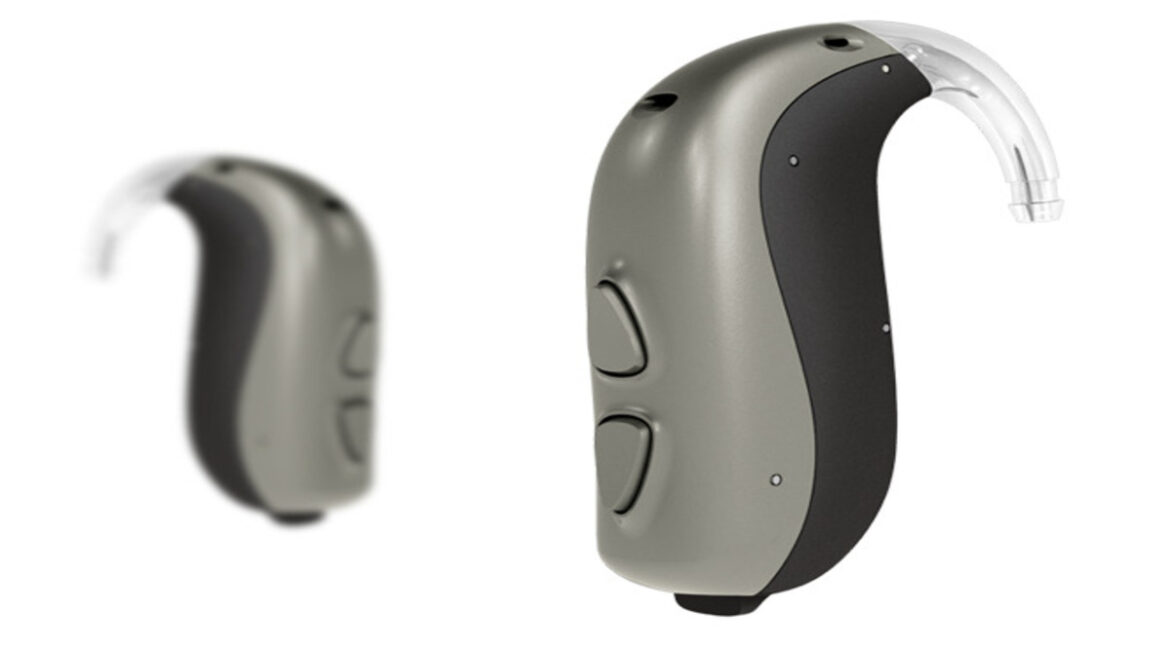Image via bernafon.com
One of the most common types of hearing aids is the behind-the-ear model, which is conventional and adaptable. The BTE can be modified to fit all ears for people who have a hearing loss of any kind.
Both behind and inside the ear, the BTE hearing aid is worn. A tiny tube connects the hearing aid’s shell, which rests behind the ear, to the earpiece, which fits inside the ear. For your chosen BTE hearing aid, there are many earpiece options, including instant-fit earpieces, also known as domes, and customizable earmolds.
What Are Behind the Ear Hearing Aid
Unlike other hearing aid types like in-the-ear (ITE) hearing aids, a behind-the-ear (BTE) hearing aid lies behind the ear after hooking over the top.
An ear mold, which is a bespoke earpiece that fits in your ear canal, is connected by a tube to the hearing aid. This kind is suitable for individuals of all ages and those with virtually any kind of hearing loss.
A behind-the-ear hearing aid:
- the largest form of hearing aid historically, while some more recent micro variants are streamlined and scarcely perceptible
- incorporates directional microphones
- is able to be amplified more than other types
- maybe more sensitive to wind noise than other kinds
- conceivably be offered with a rechargeable battery
The Difference Between BTE and RIC/RITE Hearing Aids
When contrasting RIC and BTE hearing aids, a number of distinctions become apparent. These are among the most significant.
Speaker placement
The positioning of the speaker is one of the most significant variations between BTE and RIC hearing aids (or receivers). The speaker and other electronic components are housed inside the hard casing in behind-the-ear hearing aids.
Conversely, speakers in receiver-in-the-canal hearing aids are attached to the case by a tiny electrical line. A flexible ear dome or earmold is then inserted into the ear, enclosing the speaker.
Size
BTE hearing aids have historically been the larger design since all of the electronic components must fit inside the case. Additionally, the larger container may fit larger batteries for stronger amplification (see more below). However, the reputation of BTE types as being large and bulky is gradually fading as many models today include a thinner, sleeker appearance akin to RIC hearing aids.
Amplification
BTE hearing aids often have an extended design that allows for the storage of a powerful amplifier and a sizable battery. Both high-frequency and low-frequency noises can be significantly amplified by them. Although RIC hearing aids provide a good deal of range, people with profound hearing loss will still require the greater boost provided by a BTE type.
Who Is a Good Candidate for BTE Hearing Aids
Your hearing healthcare professional may suggest the more noticeable Behind the Ear (BTE) style of hearing aid if you have been diagnosed with severe hearing loss or if you have a child who has early hearing loss because of its strong amplification ability, durability, ease of handling, or perhaps its ability to be easily re-fitted as your child grows. The good news is that there are still a lot of designs and functions that may make using BTE hearing aids enjoyable in addition to helping you hear better.
When you think of hearing aids, you probably imagine the more conventional BTE models. All BTEs feature a section that rests behind the outer ear and attaches to the ear canal using tubing, a tip, or an earmold that is specially made for the user. BTEs may accommodate more potent circuits for louder amplification and more specialized features as well as larger batteries for longer run periods because of their size. They can also be quickly adjusted as necessary without having to replace the entire hearing aid because of their compatibility with earmold pieces.
Cost of BTE Hearing Aids
Prices for hearing aids range widely on the market starting at about $800. The most expensive models can cost up to $7000 apiece. You can contact us to learn more about the pricing.
How to Care For Your New BTE Hearing Aids

Image via bernafon.com
It’s crucial to regularly clean and cares for your hearing aid. Your hearing aid will need to be sent in for repairs less frequently the better you take care of it. The daily actions you may do to keep your hearing aid in good working order are listed below.
- Utilize a battery tester to check the battery. Replace the old battery with a new one as soon as possible if it is dead or not functioning at all. Corrosion will result from using old batteries in your hearing aid, which could lead to a malfunction. You should always carry additional batteries since you never know when the one in your hearing aids will run out.
- Check for cracks or blockage in the tubing and earmold. Use the wax loop tool that came with the hearing aid to gently remove the obstruction if the earmold has earwax or other debris in it. Please inform your audiologist if the tube or earmold is cracked. How to wash your earmold is described here.
- Look for debris in the microphone port (dirt, wax). Use the wax loop tool to carefully clear the obstruction if it is clogged. Avoid pressing the wax loop into the microphone too deeply as this could force the debris in even deeper and harm the microphone.
- Look for cracks, a damaged battery door, or exposed wires in the hearing aid casing. Please let your audiologist know if you discover any damage to the hearing aid case.
- Check any broken or easy-to-move dials and switches. The telecoil or program toggle switch is one of the dials and switches (not all hearing aids will have extra dials or switches). Please let your audiologist know if you are experiencing dial or switch issues.
- Check the sound quality using the provided hearing aid stethoscope. To ensure that your hearing aids are functioning properly, you should test them every day by listening to them. Without any static or distortion, the audio should be clean and crisp. Say the sounds “oo,” “ee,” “ah,” “sh,” “s,” and “f” once the hearing aid stethoscope is fastened to the device. Are they obvious? Check the volume control as well (not on all hearing aids). Check the sound quality and hearing aid functionality by moving it up and down.
Cleaning your hearing aids
As directed, clean your hearing aids. Utilize a dry, gentle cloth to clean the hearing aid case. Avoid getting the electronic components wet! Clean in warm, soapy water after removing the earmold and tubing from the ear hook (the half-moon-shaped piece of plastic attached to the hearing aid). Before reattaching earmolds, make sure they are totally dry. Use a wax loop tool to carefully remove any obstructions from the microphone port if necessary. Avoid inserting the wax loop tool too deeply. The hearing aid could sustain damage.
Get the Best Behind the Ear Hearing Aids

Image via bernafon.com
Hearing requirements and conditions might vary from person to person. You must therefore obtain a hearing test before choosing a hearing aid.
Looking to get a new hearing aid? Our hearing care professional at J Glasses hearing aids in Singapore has the experience and can help you get a diagnosis of your hearing loss before prescribing the best hearing aids. Our hearing care professional has years of experience and is dedicated to helping you locate the best remedy for your hearing requirements.
We’ll help you every step of the way as you work to get your hearing back. Make an appointment or contact us right away!

